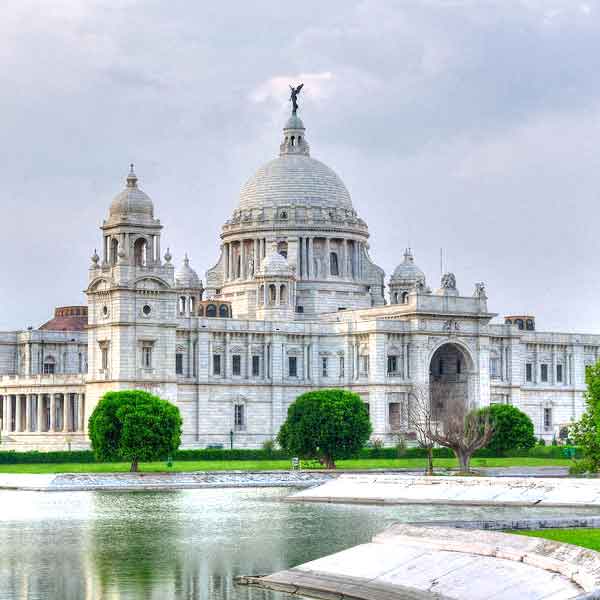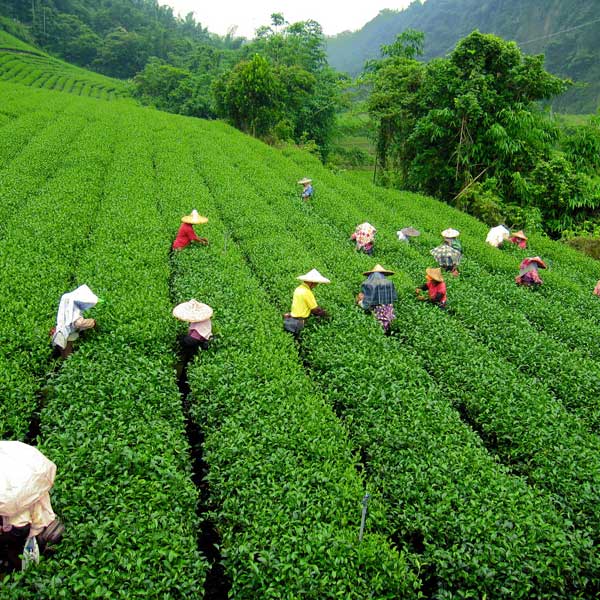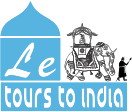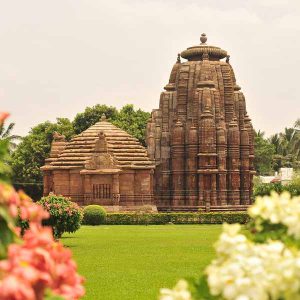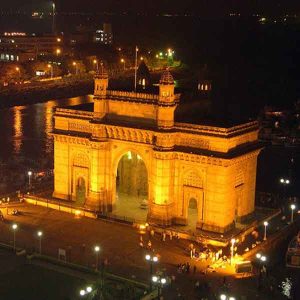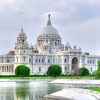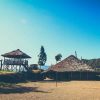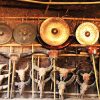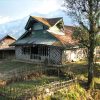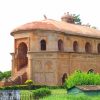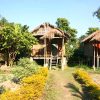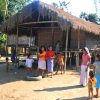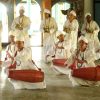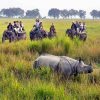Day 01: Arrival in Kolkata (Calcutta).
Arrive at Netaji Subhash Chandra Bose International Airport in Kolkata. Your trip leader will meet you outside the customs and immigration area at the airport and escort you to your hotel. We are at our leisure for the rest of the day, whether relaxing or exploring the city on our own. Kolkata, formerly called Calcutta, is known as the “Cultural Capital of India.” Its long and rich literary, artistic, and revolutionary heritage offers many museums and sights to fill a day. Overnight in Kolkata.
Day 02: Kolkata to Jorhat in Assam.
In the morning, we fly Jorhat Airport. Jorhat is a thriving cosmopolitan city and a well-known educational hub in Assam, as well as the second most important center for the cultivation of Assam tea. We settle into our hotel and in the evening we attend an orientation on the area that’s next on our itinerary, the tribal community of Nagaland. (Approx. driving time: 1/2 hour). Overnight in a hotel in Jorhat.
Day 03: Drive to Jahpho Long, Nagland.
We have an early start for our drive to Mon. Along the way we pass through tea gardens, paddy fields, and montane forests. We stop at the checkpost at Sonari to complete our entry formalities into Nagaland. Continuing on, we traverse the Naga Hills, where we can observe the traditional dwellings and the forest-cleared agricultural fields of the Konyak Naga tribal community. In the afternoon, we arrive at our camp at Jahpho Long, located between the modern town of Mon and the traditional village of Mon. In the evening we can explore on foot-visitng the local market and walking around town. (Approx. driving time: 6 hours). Overnight in our Camp.
Day 04: Tangnyu Village.
In the morning we drive to our trailhead near the Tapi River, then begin our hike to Tang Village. Trekking across these agricultural lands, we’ll see firsthand the indigenous farming methods of the Konyak Nagas and their customary boundary-marking techniques. We arrive at Tang Village in the afternoon, where we have a traditional lunch with the Angh, the hereditary chief of the village. The Angh’s house is the largest in the village-and also distinguishable by its display of skulls in the front. After lunch, we will be treated to a hike around the village, where we will visit traditional morungs (youth dormitories), view skull mounds, and stop at the gun maker’s home to learn his craft and trade firsthand. Time permitting, we may also visit a few more homes to learn about the families’ customs and activities. In the evening, we’ll be honored with a traditional Konyak warrior dance and sit down to dinner with the Angh. (Approx. driving time: 2-3 hours; Approx. hiking time: 3-4 hours). Overnight in our Camp.
Day 05: Lungwa Village – Jahpho Long.
Today, we continue on our trek toward Lungwa Village. We will pass through beautiful mountain terrain en route to the village, which we reach in the early afternoon. Once there, we take the time to freshen up, then meet the Angh Nogawang in his incredible home, where we see the finest pieces of Konyak architecture this culture has to offer. We meet the Angh at the indoor fireplace and exchange customary gifts before he leads us in a discussion over his legends and culture over lunch. Nogawang is the last of the traditional Anghs, and he is responsible for the needs of over 50 villages. If it becomes necessary, he may have to leave to attend to his subjects. If so, the prince and members of the prince’s family will attend to us. After lunch in the Angh’s house, we explore this sprawling home and examine Konyak architecture and decorative art, with its pillars, wood carvings, ceremonial bronze drums, and bamboo craft that make Konyak culture so fascinating. Afterward, we’ll briefly explore the village, then drive to our camp in Mon for dinner. (3 hours driving; 2-3 hours hiking). Overnight in our Camp.
Day 06: Jahpho Long.
We drive to Shangunyu Village and visit their small museum, which features a wonderful preserved wooden panel depicting a special folk story. After a lunch back at camp, we meet the Angh of Mon Village at his house for tea and enjoy a presentation of the Konyak Naga singing tradition, which is in desperate need of preservation as it may head toward extinction. Dinner is back at camp. In the evening, we are joined by local youth and elders who demonstrate their unique knitting and weaving skills. This is usually accompanied by the singing of folk stories in memory of Naga legends. (Approx. driving time: 3-4 hours). Overnight in our Camp.
Day 07: Sibsagar – Jorhat.
After an early breakfast, we prepare for an eventful day on the road. Our first stop is Charadeo Maidam, a 13th to 14th-century burial mound for the Ahom kings. There, we can explore their large pyramid-like structures and rest for lunch. Our drive continues to Sibsagar, to explore 14th-century monuments of the Ahom Kingdom, including Sibsagar’s 257-acre body of water; the Siva Dhol temple, standing 104 feet tall; Rang Ghar, the two-storied royal sports pavilion where Ahom kings and nobles witnessed games like buffalo fights during their festivals; and the Assam Tai museum, which has various collections of the Ahom era. We continue driving to reach Jorhat by evening. (Approx. driving time: 5 hours). Overnight in our hotel in Jorhat.
Day 08: Majuli Island.
We drive to the Nematighat ferry station and board a private ferry to start our journey on the Brahmaputra River to Majuli Island. Majuli is one of the largest river islands in the world, and possibly the largest freshwater island in South Asia. However, Majuli is shrinking due to constant soil erosion, so this is an ideal opportunity to see it. In 15 to 20 years, this incredible island may not exist. Majuli is home to the Neo-Vishnavite Satra (monastic) culture and Mising tribes. Our accommodations here will be at Mepo Okum (“Happy Home”), a warm, simple eco-friendly resort run by the Mising tribal community. We’ll arrive at Mepo Okum in time for lunch.
In the afternoon, we’ll begin our exploration of Majuli Island, starting with a visit to a museum at Auniati Satra. Then we hike past paddy fields dotted with bodies of water to visit Kamalabari Satra, one of the oldest satras (monasteries) in Majuli. There, we get to meet the monks and watch a performance of their sacred satriya dances. At the end of the day, we return to our resort for overnight. (Approx. driving time: 2 hours; Approx. 2-3 hour boat ride).
Day 09: Majuli Island.
We begin with a short morning drive to Dapakgaon, a Mishing tribal village, where we are welcomed by dancing Mishing men and women. In the 18th century, the Mishing tribal community migrated to the plains of Assam from the hills in Arunachal Pradesh and settled around swamps, river banks, and large tanks, building their homes on stilts. In the local language, “Mi” means water and “Shing” means people-they are a tribe who lives near water. We’ll explore their village and learn about their lifestyle. After eating a traditional Mishing lunch, we’ll take a short hike to Benganati Satra to tour an old monastery that has been relocated three times on the island due to the threats of soil erosion. We’ll visit the Namgarh (prayer hall) of the Satra-first joining the monks in their regular prayers, then visiting their homes. The Benganati Satra culture is unique in that it does not deny women entry into the order and accepts married couples into their fold. If the opportunity arises, we’ll meet the Satraadikar (the Chief Monk) who has command of English and will provide us an interesting glimpse into their monastic lifestyle. We will also visit their museum which houses rare palm-leaf manuscripts, written by Srimanta Shankardeva-founder of Satra tradition in Assam-and see the gold-plated umbrella of the Ahom King who patronized this monastery long ago. We’ll drive back to our resort in the evening for overnight. (Approx. driving time: 3 hours; Approx hiking time: 1 hour).
Day 10: Majuli Island.
Today we’ll drive to Kamalabarighat ferry station, board a private boat, and transfer to Neematighat ferry station, where we’ll meet our vehicle for the drive to Kaziranga National Park, one of the world’s key wildlife sanctuaries. Upon our afternoon arrival, we’ll check into our lodge and have time to walk around the tea estate. We’ll learn why Assamese tea is prized by tea connoisseurs all over the world, and have the opportunity to buy some of our own to bring home. (Approx driving time: 5 hours; Approx. 2 hour boat ride). Overnight in a Jungle Resort in Kaziranga.
Day 11: Kaziranga National Park.
We spend a memorable day in Kaziranga, a UNESCO World Heritage site, where wildlife watching is truly spectacular. Located on the floodplains of the Brahmaputra River, the park, which covers some 260 square miles, protects one of the few remaining regions of natural habitat in the terai, the lowland valleys in the foothills of the mighty Himalaya. It’s characterized by “grass jungle” in which floodplains of tall elephant grass and tracts of tropical forest are dotted with marshes and oxbow lakes, making it an exceptionally rich wildlife habitat.
Kaziranga National Park is the stronghold of the great Indian one-horned rhinoceros, with a population of more than 1,100. Two other giant (and also highly endangered) mammals also find sanctuary in Kaziranga: the Asian elephant and the wild water buffalo. Tiger, sloth bear, Assam macaques, capped langurs, sambar, swamp deer, hog deer, smooth-coated Indian otter, and both jungle and fishing cats are also resident in the park. Gangetic dolphins cruise the Brahmaputra River, and thousands of water birds, such as pelicans and storks, flock around Kaziranga’s small lakes.
We will likely get numerous sightings of rhinos and elephants in a variety of behaviors. We do our game viewing by vehicle and from the back of trained elephants-a great way to get close to wild animals and view them from a high perch. Overnight in the Resort.
Day 12: Kolkata.
We take the morning to drive to Jorhat, and then fly to Netaji Subhash Chandra Bose International Airport in Kolkata in the early afternoon. After transferring to the hotel, we have the rest of the day free to either rest or to once again explore this rich, metropolitan city. Overnight in Kolkata.
Day 13: Kolkata.
We take the morning to drive to Jorhat, and then fly to Netaji Subhash Chandra Bose International Airport in Kolkata in the early afternoon. After transferring to the hotel, we have the rest of the day free to either rest or to once again explore this rich, metropolitan city. Overnight in Kolkata.
Day 14: Depart Kolkata.
Our rooms are held until noon for the most time to prepare. We transfer to Netaji Subhash Chandra Bose International Airport to board our homeward-bound flights. If you prefer to spend more time in India, you may wish to join one of our extensions in India.
Date and price to suit individual arrangements based on 2 people sharing. Breakfast included. Private air-conditioned car and driver with English speaking guides for sightseeing.

